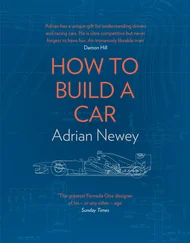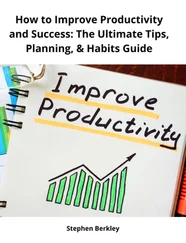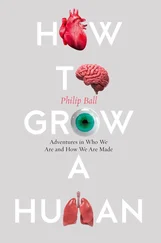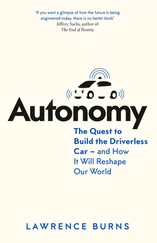Eyal, Nir - Hooked - How to Build Habit-Forming Products
Здесь есть возможность читать онлайн «Eyal, Nir - Hooked - How to Build Habit-Forming Products» весь текст электронной книги совершенно бесплатно (целиком полную версию без сокращений). В некоторых случаях можно слушать аудио, скачать через торрент в формате fb2 и присутствует краткое содержание. Год выпуска: 2014, Издательство: Nir Eyal, Жанр: Старинная литература, на английском языке. Описание произведения, (предисловие) а так же отзывы посетителей доступны на портале библиотеки ЛибКат.
- Название:Hooked: How to Build Habit-Forming Products
- Автор:
- Издательство:Nir Eyal
- Жанр:
- Год:2014
- ISBN:нет данных
- Рейтинг книги:5 / 5. Голосов: 1
-
Избранное:Добавить в избранное
- Отзывы:
-
Ваша оценка:
- 100
- 1
- 2
- 3
- 4
- 5
Hooked: How to Build Habit-Forming Products: краткое содержание, описание и аннотация
Предлагаем к чтению аннотацию, описание, краткое содержание или предисловие (зависит от того, что написал сам автор книги «Hooked: How to Build Habit-Forming Products»). Если вы не нашли необходимую информацию о книге — напишите в комментариях, мы постараемся отыскать её.
Hooked: How to Build Habit-Forming Products — читать онлайн бесплатно полную книгу (весь текст) целиком
Ниже представлен текст книги, разбитый по страницам. Система сохранения места последней прочитанной страницы, позволяет с удобством читать онлайн бесплатно книгу «Hooked: How to Build Habit-Forming Products», без необходимости каждый раз заново искать на чём Вы остановились. Поставьте закладку, и сможете в любой момент перейти на страницу, на которой закончили чтение.
Интервал:
Закладка:
Karthik Srinivasan
John Starmer
Slobodan Stipic
Aleksandar Stojanovic
Dave Stone
Nisha Sudarsanam
Lydia Sugarman
Mike Summerfield
Andreas Sutharia
Brent Taggart
Itai Talmi
Dixit Talwar
Michael Tame
Norman Tan
Eva Tang
Ali Rushdan Tariq
John Thompson
Bob Thordarson
Brenton Thornicroft
Barbara Tien
Amir Toister
Jacqueline Tomko
Andrea Torino Rodriguez
Raul Troyo
Steph Tryphonas
Rattapoom Tuchinda
Oji Udezue
Cristobal Undurraga
Adriana Ursache
Haruna Usman
Branislav Vajagić
Paul Valcheff
Joeri Vankeirsbilck
Tim Varner
Ashwanth Vemulapalli
René Vendrig
Francisco Vieyra
Alberto Villa
Guy Vincent
Khuong Vo Thanh
Marcus Vorwaller
Todd Wahnish
Akane Wakasugi
Karl Waldman
AnneMarie Ward
Mark Warren
Alan Weinkrant
Jay Weintraub
Stephen Wendel
Erik Wesslen
Albert Wieringa
Denis Wilson
Rick Winfield
Melinda Wiria
Reggie Wirjadi
Vanita Wolf
Nathanael Wolfe
Lyon Wong
Margo Wright
Renee Yarbrough
Dean Young
Beverley Zabow
Danny Zagorski
Danny Zagorski
Hasnain Zaheer
Cindy Ris Zanca
Xin Zhou
Julie Zilber
Tal Zilberman
Keivan Zolfaghari
Zoran Zuber
NOTES AND SOURCES
Introduction
[i] “IDC-Facebook Always Connected.pdf - File Shared from Box.” Accessed December 19, 2013. https://fb-public.app.box.com/s/3iq5x6uwnqtq7ki4q8wk.
[ii] “Survey Finds One-Third of Americans More Willing to Give Up Sex Than Their Mobile Phones.” Accessed December 19, 2013. http://www.telenav.com/about/pr-summer-travel/report-20110803.html.
[iii] Oulasvirta, Antti, Tye Rattenbury, Lingyi Ma, and Eeva Raita. “Habits Make Smartphone Use More Pervasive.” Personal Ubiquitous Comput. 16, no. 1 (January 2012): 105–114. doi:10.1007/s00779-011-0412-2.
[iv] Belic, Dusan, IntoMobile Thursday, February 9th, and 2012 at 12:50 AM. “Tomi Ahonen: Average Users Looks at Their Phone 150 Times a Day!” IntoMobile. Accessed December 19, 2013. http://www.intomobile.com/2012/02/09/tomi-ahonen-average-users-looks-their-phone-150-times-day/.
[v] Morsella E, Bargh JA, Gollwitzer PM (eds) (2008) Oxford handbook of human action. Oxford University Press, Oxford.
[vi] For purposes of this book, I use the definition of habit formation as the process of learning new behaviors through repetition until they become automatic. I am grateful to Dr. Stephen Wendel for pointing out the spectrum of habits. For a framework describing other automatic behaviors see: Bargh, John A. “The Four Horsemen of Automaticity: Awareness, Intention, Efficiency, and Control in Social Cognition.” In Handbook of Social Cognition, Vol. 1: Basic Processes; Vol. 2: Applications (2nd Ed.), edited by R. S. Wyer and T. K. Srull, 1–40. Hillsdale, NJ, England: Lawrence Erlbaum Associates, Inc, 1994.
[vii] Verplanken, Bas, and Wendy Wood. “Interventions to Break and Create Consumer Habits.” Journal of Public Policy & Marketing 25, no. 1 (March 2006): 90–103. doi:10.1509/jppm.25.1.90.
[viii] Wood W, Neal DT (2007) A new look at habits and the habit-goal interface. Psychol Rev 114(4):843–863[viii].
[ix] “Pinterest.” Wikipedia, the Free Encyclopedia, December 21, 2013. http://en.wikipedia.org/w/index.php?title=Pinterest&oldid=587088493.
[x] “What Causes Behavior Change?.” BJ Fogg’s Behavior Model. Accessed November 12, 2013. http://www.behaviormodel.org/.
[xi] Robert Sapolsky: Are Humans Just Another Primate? Accessed December 19, 2013. http://fora.tv/2011/02/15/Robert_Sapolsky_Are_Humans_Just_Another_Primate.
[xii] Brevers, Damien, and Xavier Noël. “Pathological Gambling and the Loss of Willpower: A Neurocognitive Perspective.” Socioaffective Neuroscience & Psychology 3, no. 0 (September 26, 2013). doi:10.3402/snp.v3i0.21592.
[xiii] “The Acceleration of Addictiveness,” Paul Graham. Accessed November 12, 2013. http://www.paulgraham.com/addiction.html.
[xiv] “Night of the Living Dead.” Wikipedia, the Free Encyclopedia, December 18, 2013. http://en.wikipedia.org/w/index.php?title=Night_of_the_Living_Dead&oldid=586570022.
[xv] Thaler, Richard H., Cass R. Sunstein, and John P. Balz. Choice Architecture. SSRN Scholarly Paper. Rochester, NY: Social Science Research Network, April 2, 2010. http://papers.ssrn.com/abstract=1583509.
[xvi] For a memorable acronym of the Hook Model, think “ATARI”, as in the 1980s video gaming console. “A hook has four parts: Trigger, Action, Reward, and Investment.
Chapter 1: The Habit Zone
[xvii] Wood, Wendy, Jeffrey M Quinn, and Deborah A Kashy. “Habits in Everyday Life: Thought, Emotion, and Action.” Journal of Personality and Social Psychology 83, no. 6 (December 2002): 1281–1297.
[xviii] Yin, Henry H., and Barbara J. Knowlton. “The Role of the Basal Ganglia in Habit Formation.” Nature Reviews Neuroscience 7, no. 6 (June 2006): 464–476. doi:10.1038/nrn1919.
[xix] Dickinson, A. & Balleine, B. (2002) The role of learning in the operation of motivational systems. In Gallistel, C.R. (ed.), Stevens’ Handbook of Experimental Psychology: Learning, Motivation, and Emotion. Wiley and Sons, New York, pp. 497–534.
[xx] “Notes from 2005 Berkshire Hathaway Annual Meeting” Tilson Funds. Accessed November 12, 2013. http://www.tilsonfunds.com/brkmtg05notes.pdf
[xxi] “Mungerisms: Charlie Munger: Turning $2 Million Into $2 Trillion.” Mungerisms. Accessed November 12, 2013. http://mungerisms.blogspot.com/2010/04/charlie-munger-turning-2-million-into-2.html.
[xxii] “Candy Crush: So Popular It’s Killing King’s IPO?” Yahoo Finance. Accessed December 16, 2013. http://finance.yahoo.com/blogs/the-exchange/candy-crush-so-popular-it-s-smashing-interest-in-an-ipo-160523940.html.
[xxiii] “Evernote: ‘The Longer You Use It, the More Likely You Are to Pay’.” CNET. Accessed November 12, 2013. http://news.cnet.com/8301-30685_3-57339139-264/evernote-the-longer-you-use-it-the-more-likely-you-are-to-pay/.
[xxiv] Freedman, David H. “Say Hello to Your New Brain.” Inc.com. Accessed November 14, 2013. http://www.inc.com/magazine/201112/evernote-2011-company-of-the-year.html.
[xxv] Skok, David. “Lessons Learned – Viral Marketing.” For Entrepreneurs. Accessed November 12, 2013. http://www.forentrepreneurs.com/lessons-learnt-viral-marketing/.
[xxvi] Gourville, John T. “Eager Sellers and Stony Buyers: Understanding the Psychology of New-Product Adoption.” Accessed November 12, 2013. http://hbr.org/product/eager-sellers-and-stony-buyers-understanding-the-p/an/R0606F-PDF-ENG.
[xxvii] Adams, Cecil. “Was the QWERTY Keyboard Purposely Designed to Slow Typists?,” October 30, 1981. http://www.straightdope.com/columns/read/221/was-the-qwerty-keyboard-purposely-designed-to-slow-typists
[xxviii] Bouton, Mark E. “Context and Behavioral Processes in Extinction.” Learning & Memory 11, no. 5 (September 1, 2004): 485–494. doi:10.1101/lm.78804.
[xxix] Kirshenbaum, Ari P., Darlene M. Olsen, and Warren K. Bickel. “A Quantitative Review of the Ubiquitous Relapse Curve.” Journal of Substance Abuse Treatment 36, no. 1 (January 2009): 8–17. doi:10.1016/j.jsat.2008.04.001.
[xxx] Jeffery, Robert W., Leonard H. Epstein, G. Terence, Adam Drewnowski, Albert J. Stunkard, and Rena R. Wing. “Long-term Maintenance of Weight Loss: Current Status.” Health Psychology 19, no. 1, Suppl (2000): 5–16. doi:10.1037/0278-6133.19.Suppl1.5.
[xxxi] Duhigg, Charles. The Power of Habit: Why We Do What We Do in Life and Business. New York: Random House, 2012. p 20.
[xxxii] Judah, G., B. Gardner, and R. Aunger. “Forming a Flossing Habit: An Exploratory Study of the Psychological Determinants of Habit Formation.” British Journal of Health Psychology 18 (2013): 338–353.
Читать дальшеИнтервал:
Закладка:
Похожие книги на «Hooked: How to Build Habit-Forming Products»
Представляем Вашему вниманию похожие книги на «Hooked: How to Build Habit-Forming Products» списком для выбора. Мы отобрали схожую по названию и смыслу литературу в надежде предоставить читателям больше вариантов отыскать новые, интересные, ещё непрочитанные произведения.
Обсуждение, отзывы о книге «Hooked: How to Build Habit-Forming Products» и просто собственные мнения читателей. Оставьте ваши комментарии, напишите, что Вы думаете о произведении, его смысле или главных героях. Укажите что конкретно понравилось, а что нет, и почему Вы так считаете.












